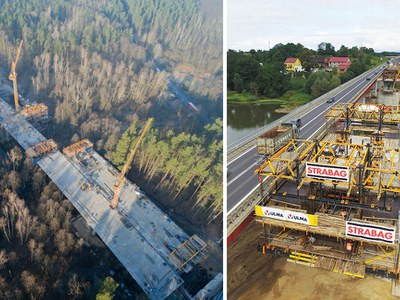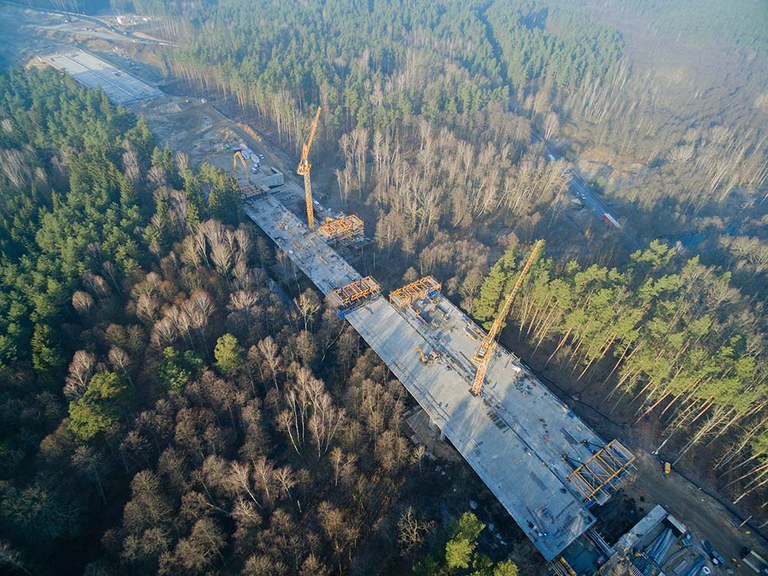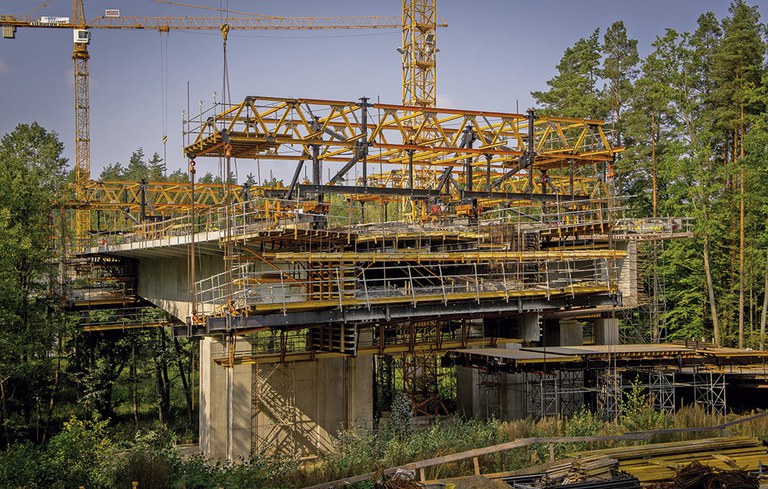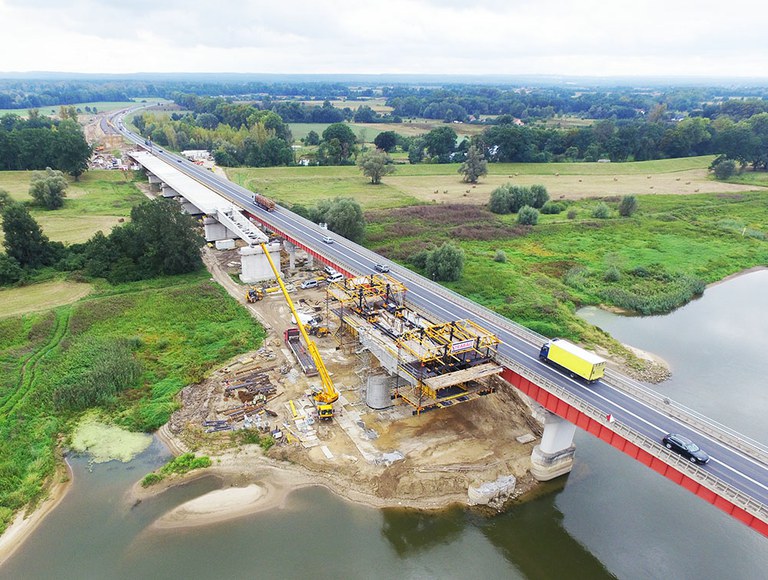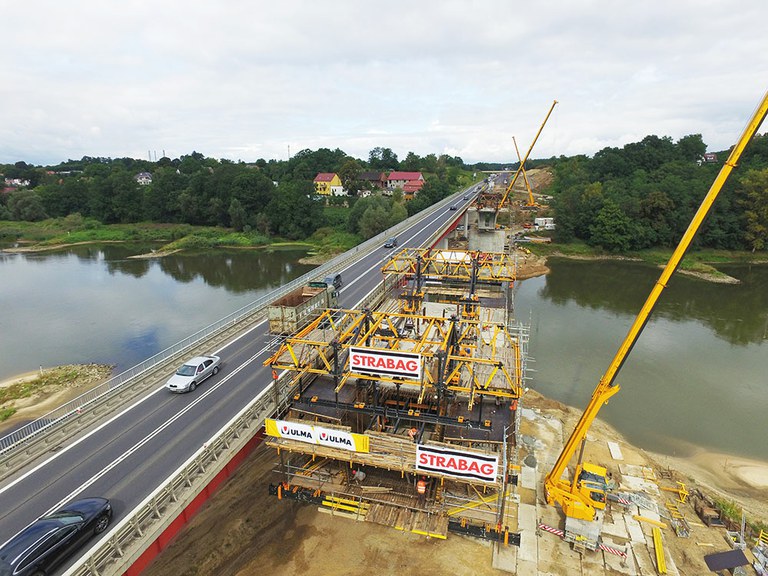Duplicate CVS Form Carrier Technology in Poland
The CVS cantilever formwork carriage demonstrated its efficacy in spanning large distances while requiring only limited ground-space, thanks to the lack of shoring system needed. Among the more notable advantages offered by the system are the repeatable nature of the construction process and the hydraulic advance, both of which contribute to notably increased worksite efficiency. In both undertakings the clients trusted in ULMA’s experience and knowledge of formwork technology specifically designed for such projects.
MS-4A Bridge over the Oder River, Expressway S3
The trapezoidal box-girder bridge over the Oder River, measuring 265.5 m in length, features two post-tensioned concrete carriageways.
Constructed with spans measuring 72.5 m, 120 m, 73 m, four of 42 m, and one 41.5 m in length, the bridge required diverse construction methods. CVS cantilever formwork carriage was chosen to execute the spans crossing and adjoining the river. The carriers provide a high-performance solution, designed to offer significant weight-bearing capacity without any compromise in their ability to adapt to varied cross-sections. The lateral spans were completed using the incremental launching method.
These sections were completed using four form carriers over the two piers. In order to avoid excessive bending moments on the pier and avoid costly shoring works, ULMA designed a counterbalanced sequence of simultaneous symmetrical advances on opposite sides of the pier.
Each bridge section measured a constant 11 m in width and 4.45 m in length, with a thickness varying between 6.6 m and 2 m. Being a flexible system, advances were completed every seven days.
MS-30.1 Bridge over the Drwęca River, Expressway S7
The double-carriageway viaduct measuring 220 m in length stretches over the Drwęca Valley. Eight CVS Form Carriers were used simultaneously to construct the span over the river, stretching 100 m in length. Built as a box girder with vertical sidewalls and a thickness ranging from 5.80 m over the pier to 2.35 m at the end segments. The centre span was completed in 20 segments with lengths increasing from 4 m to 5 m, in proportion to decreasing segment thickness.
The considerable deck dimensions of 17.6 m and 19.3 m necessitated concrete beams as supplemental reinforcement to start the segment.
The form carriers are covered by working platforms at all levels. For the pier segment as well as each of the bridge segments, every structure was equipped with working platforms and access systems for all work spaces, as well as protective systems to prevent falls of both personnel and objects.
Fifty-three T-60 Shoring Towers measuring 9 m in height were used to build the pier segment. The sidewall formwork was built with VMK panels, pre-assembled on the ground. The flange formwork was supported by T-60 Shoring anchored to the previously executed sidewalls. In turn, the upper box slab was shored from inside by ALUPROP aluminium props.
Construction Method with CVS Formwork Carriages
The method consists in the execution, beginning from a single pier, of successive segments using formwork suspended from the CVS Formwork Carriages. During the first phase, the structure must conform to the static cantilever schema. When a given cantilever section reaches the following section, both are joined by an end segment, at which point the schema becomes that of a continuous beam. The CVS System is particularly notable for its efficacy in spanning rivers or existing roads, and is suited for bridges with spans from 70 to 200 metres. Moreover, construction can be completed without interrupting traffic.
The cantilever method for bridge construction begins with the pouring of the foundation pier that supports the pier segment, the structure from which the cantilever process begins. Depending on the static schema used in the project, the pier segment can be shored from the pier itself or from temporary falsework. Subsequently, formwork carriages are installed on the pier segment to construct the cantilevers. Formwork carriages are metal structures from which the formwork is suspended, and which serve to contain the forces exerted by the concrete of the segment being executed. The length of the segment varies as a function of its thickness, which can vary between 3 m and 5 m. Once the concrete is cured to sufficient strength, the cantilever section is post-tensioned, after which the formwork is stripped and the formwork carriage is advanced hydraulically. The structure advances to the following pour, where the formwork assembled, the rebar is placed, and the new segment is poured.


